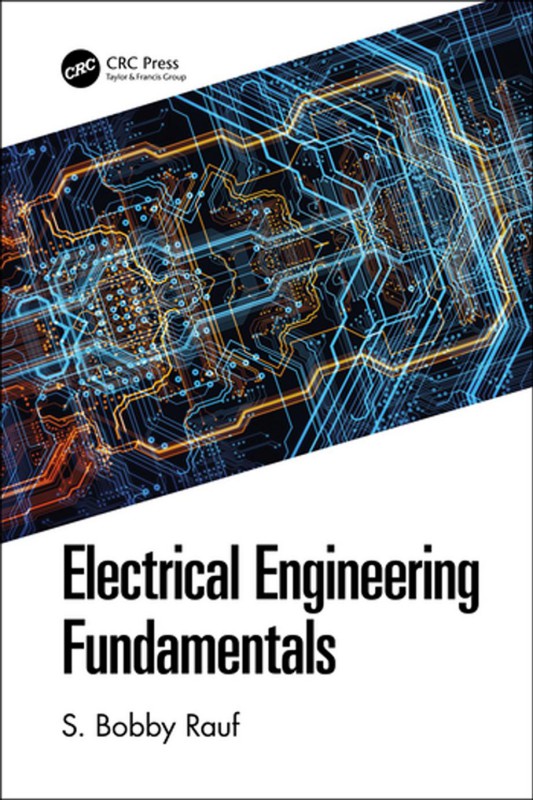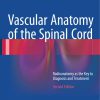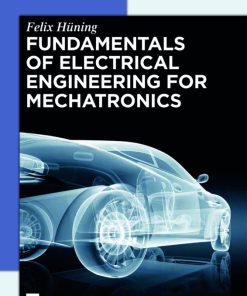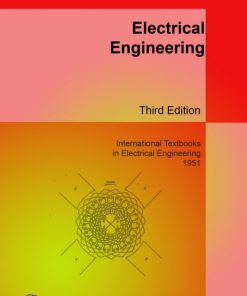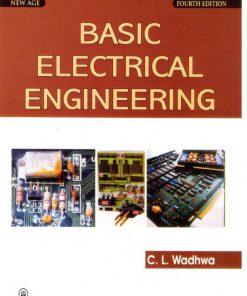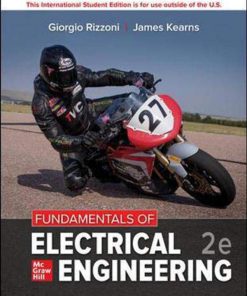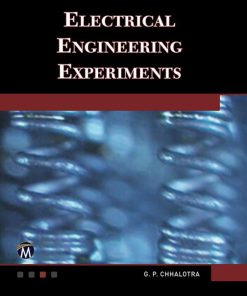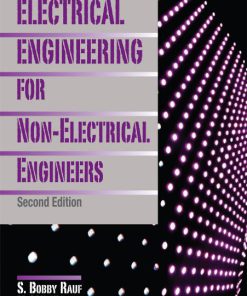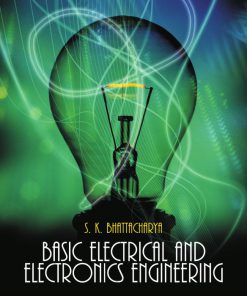(Ebook PDF) Electrical Engineering Fundamentals 1st edition by Bobby Rauf 1000284980 9781000284980 full chapters
$50.00 Original price was: $50.00.$25.00Current price is: $25.00.
Authors:S. Bobby Rauf , Series:Electrical Engineering [193] , Author sort:Rauf, S. Bobby , Languages:Languages:eng , Published:Published:Nov 2020 , Publisher:CRC Press , Comments:Comments:This book provides a clear and strong grasp of electrical engineering fundamentals and a better understanding of electrical engineering terms, concepts, principles, laws, analysis methods, solution strategies and computational techniques.
Electrical Engineering Fundamentals 1st edition by S. Bobby Rauf – Ebook PDF Instant Download/DeliveryISBN: 1000284980, 9781000284980
Full download Electrical Engineering Fundamentals 1st edition after payment.
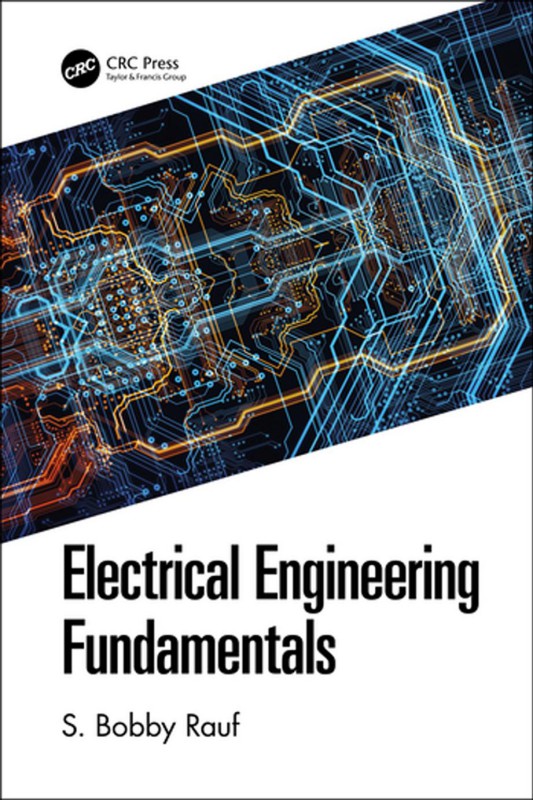
Product details:
ISBN-10 : 1000284980
ISBN-13 : 9781000284980
Author : S. Bobby Rauf
Many, in their quest for knowledge in engineering, find typical textbooks intimidating. Perhaps due to an extensive amount of physics theory, an overwhelming barrage of math, and not enough practical application of the engineering principles, laws, and equations. Therein lies the difference between this text and those voluminous and daunting conventional university engineering textbooks. This text leads the reader into more complex and abstract content after explaining the electrical engineering concepts and principles in an easy to understand fashion, supported by analogies borrowed from day-to-day examples and other engineering disciplines.
Electrical Engineering Fundamentals 1st Table of contents:
Chapter 1 Fundamental Electrical Engineering Concepts and Principles
Introduction
Voltage or EMF (Electromotive Force)
Current
Resistance
Resistors in Series
Resistors in Parallel
Electrical Short and Open Circuit
Capacitor, Capacitance, and Capacitive Reactance
Capacitors in Series
Capacitors in Parallel
Capacitive Reactance
Inductor, Inductance, and Inductive Reactance
Series Inductor Combination
Parallel Combination of Inductors
Inductive Reactance
Impedance
Magnetic Circuits versus Electrical Circuits
Basic Electrical Instruments
Multi-meter
Clamp-on Ammeter or Clamp Meter
Oscilloscope/Scope Meter
Self-Assessment Problems and Questions – Chapter 1
Chapter 2 DC Circuit Analysis, Diodes, and Transistors – BJT, MOSFET, and IGBT
Introduction
Ohm’s Law
Kirchhoff’s Voltage Law (KVL)
Approach I
Approach II
Kirchhoff’s Current Law (KCL)
Approach I
Approach II
Voltage Division
Current Division
Multi-loop Circuit Analysis
Circuit Analysis Using Cramer’s Rule and Linear Algebra
Superposition Theorem
Thevenin Equivalent
Norton Equivalent
Diodes
Special Purpose Diodes
Common Applications of Diodes
Half-Wave Rectifier
Full-Wave Rectifier
Transistors
Electronic Device Applications on Printed Circuit Boards
Self-Assessment Problems and Questions – Chapter 2
Chapter 3 Alternating Current
Introduction
Alternating Current (AC) versus Direct Current (DC)
Electrodeposition – DC and the Average Value of AC
Alternating Current and Impedance
Mathematical and Geometric Representation of Complex AC Entities
Polar or Phasor Form
Rectangular Form
Sinusoidal or Trigonometric Form
Exponential Form
Impedance Analysis
Entity “j” in AC
Transformers
Common Single-Phase AC Transformer Applications
Autotransformers
Voltage Regulation, Voltage Regulators, and Buck–Boost Transformers
Three-Phase AC
Three-Phase AC Systems versus Single-Phase AC Systems
Current Transformers
Three-Phase AC Transformers
Three-Phase Δ–Δ Transformer Configuration
Three-Phase Δ–Y Transformer Configuration
Three-Phase Y–Δ Transformer Configuration
Three-Phase Y–Y Transformer Configuration
Self-Assessment Problems and Questions – Chapter 3
Chapter 4 DC and AC Power, Efficiency, and Energy Flow
Introduction
Power
Electric Motor Horsepower Required to Move/Convey Mass
DC Power
Single-Phase AC Power
Three-Phase AC Power
Efficiency
Power Conversion from Steam to Electrical Form – Steam to Wire
Power Conversion from Water to Electrical Form – Water to Wire
Power Conversion in Hydraulic Pump Systems – Wire to Water Transformation of Power and Energy
Self-Assessment Problems and Questions – Chapter 4
Chapter 5 Power Factor and Its Significance in Practical Applications
Introduction
ELI the ICE Man
Power Factor
Lagging Power Factor
Lagging Power Factor – Impedance Perspective
Leading Power Factor and Impedance
Power Factor Correction
Addition of Capacitance or Capacitive Reactance
Automatic Switching PF Correcting Capacitor System
General Information on Power Factor and the Application of Power Factor Correcting Capacitors
Addition of Inductance or Inductive Reactance to Correct for Leading Power Factor
Frequency Manipulation Approach for Correction of Power Factor
Utilization of Synchronous Motors or Generator for Power Factor Correction
Self-Assessment Problems and Questions – Chapter 5
Chapter 6 Power Quality and Power Management
Introduction
Demand
Peak Demand
Load Factor
Service Factor
Computation of Large Industrial or Commercial Electrical Power Bills
Self-Assessment Problems and Questions – Chapter 6
Chapter 7 Electrical Machines – Motors and Generators
Introduction
DC Generator
DC Motor
AC Alternator
AC Induction Motor
Motor Slip
Motor Torque and Power
Single-Phase and Three-Phase Motor Line Current Computation
Single-Phase AC Induction Motor Current
Three-Phase AC Induction Motor Current
Synchronous Motors
Motor Starting Methods for Induction Motors
DC Motor Speed Control
AC Motor Speed Control
Motor Classifications
Typical Motor Nameplate Information for Large Three-Phase Induction Motor
Self-Assessment Problems and Questions – Chapter 7
Chapter 8 Electrical Power Distribution and Control Equipment, and Safety-Related Devices
Introduction
Voltage Categories in Power Distribution Systems
Low-Voltage Systems
Medium-Voltage Systems
High-Voltage Systems
Extra High-Voltage (EHV) Systems
Ultra-High Voltage Systems
Power Equipment Measurement Categories
MCCs or Motor Control Centers
NEMA Enclosure Types
MCC Bus Bars and Bus Connections
Horizontal Ground Bus
Vertical Ground Bus
Incoming Lug Compartment
Main Fusible Disconnect Switch
Main Circuit Breaker
Stab Assembly
Unit Grounding Provisions
Unit Handle
Unit Interlock
Motor Starter
Pilot Devices
FVR, Full Voltage Reversing Starter and Variety of Other Power Control Devices
Variable Frequency Drives – Up to 250 hP
Smart Motor Controllers (SMCs) – Up to 500 A
Motor Soft Starts
Comparison between SMCs, VFDs, and Soft Starts
PLC and I/O Chassis
Metering Units
Main Switch Yard and Medium-Voltage Switchgear
Medium-Voltage Switchgear – Loop Switch
Power Factor Correcting Capacitors and Step-Down Transformer, Main Switch Yard
Circuit Breakers
Low-Voltage Circuit Breakers
Medium-Voltage Circuit Breakers
High-Voltage Circuit Breakers
Self-Assessment Questions – Chapter 8
Chapter 9 National Electric Code® and Arc-Flash Electrical Safety Standards
Introduction
NEC® Articles
Art. 90 – Introduction to NEC® and Outline
Art. 100 – Definitions
Art. 110.6. – Conductor Sizes, AWG, and Circular Mils
Article 110.16 – Arc-Flash Hazard Warning
Art. 110.26 – Clearances and Working Space Requirements
Art. 210 – Branch Circuits
Art. 210.9 – Circuits Derived from Autotransformers
Art 210.20 – Overcurrent Protection
Art. 240 – Overcurrent Protection
Art. 240.50–240.101 – Circuit Breaker and Fuse Types
Art. 250 – Grounding and Bonding
Art. 310 – Conductors and General Wiring
Art. 358 – Electrical Metallic Tubing: Type EMT
Art. 408 – Switchboards and Panelboards
Art. 500.5 – Classifications of Locations
Art. 600 – Electric Signs and Outlet Lighting
Art. 700 – Emergency Systems
Art. 800 – Communication Systems
Chapter 9 – Tables
Ampacity of Conductors – Table 310-15
Arc Flash
Physical and Thermal Background of Arc Flash
Arc-Flash PPE
PPE, for Incident Energy of 1.2–12 cal/cm2
PPE, for Incident Energy Greater Than 12 cal/cm2
Electrical Safety Certifications
Other, Common Safety Certifications
Additional Information on NEMA® and IP Ratings
NEMA® versus IP Enclosure Ratings
Common Acronyms Associated with Electrical Standards Organizations
Common Electrical/Electronic Safety Devices
Safety E-Stop Devices
Safety Light Curtain System
AAC (Area Access Control)
Cable Pull Switches
Key Interlock Solenoid Switches
GuardMat™ Safety Mats
GuardEdge™ Safety Edges
Safety PLCs
Safety Relays
Self-Assessment Problems and Questions – Chapter 9
Chapter 10 Electrical Drawings and PLC Relay Ladder Logic Program
Introduction
Electrical Drawings
One-Line Schematic Diagram
Examination of Branch Circuit D2
Examination of Branch Circuit D5
Examination of Branch Circuit D4
Wiring Diagram
Control Diagram/Drawing
Input Control Diagram
Output Control Diagram
Relay Ladder Logic
Self-Assessment Problems and Questions – Chapter 10
Chapter 11 Electrical Power Bill Calculation and Electrical Energy Cost Reduction
Introduction
Four-Faceted Approach to Electrical Energy Cost Reduction
Electric Utility Rate Schedules
Schedule RS (NC)
Monthly Rate
Schedule OPT-I (NC)
Rates under OPT-I Schedule
Determination of Billing Demand
Power Factor Correction
Hourly Pricing Option/Schedule
Areas of Opportunity for Electrical Energy Cost Savings
Schedule or Rider SG, On-Site Generation
Schedule or Rider IS, Interruptible Power Service
Tips on Utility Rate Schedules and Contracts
Energy Performance Contracting and ESCO Opportunities
Electrical Energy-Related Measures Typically Included in ESCO or EPC Endeavors
Self-Assessment Problems and Questions – Chapter 11
Chapter 12 Batteries and Capacitors as Energy Storage Devices
Introduction
Battery Classifications
Primary Batteries
Secondary Batteries
Li–Ion Battery
Lead–Acid or SLI Battery
Construction, Composition, and Operation of a Common Lead–Acid Battery
Specific Energy
Energy Density
Specific Power
Comparison of Electrical Energy and Charge Storage Systems
Energy or Charge Storage Device Comparison – Specific Energy Perspective
Energy or Charge Storage Device Comparison – Specific Power Perspective
Energy or Charge Storage Device Comparison – Duration of Energy Supply and Storage Perspective
Specific Energy and Energy Density Comparison between Lead–Acid and Other Contemporary Batteries
Cost Comparison of Major Secondary Batteries
Universal Symbol for Battery
Discharging Characteristics of Batteries
Depth of Discharge
Advantages and Disadvantages, Lithium Ion versus Lead Acid
Charging
Self-Discharge Rates
Specific Power, Specific Energy, and Power Density
Life Span of Batteries
C-Rating of Batteries
Battery Discharge Rate and Nominal Capacity
Temperature and Battery Discharge Characteristics
Power and Energy Performance Assessment of Battery
Safe Discharge Ratings of Batteries
Power and Energy (Ah) Formulas and Numerical Examples
Battery Equivalent Circuit
Battery Voltage Regulation
People also search for Electrical Engineering Fundamentals 1st:
del toro electrical engineering fundamentals
vd toro electrical engineering fundamentals
v del toro electrical engineering fundamentals
electrical engineering fundamentals 2e del toro
electrical engineering fundamentals angus
You may also like…
eBook PDF
(Ebook PDF) Basic Electrical Engineering 4th edition by Wadhwa 9788122429473 full chapters
eBook MOBI
(Ebook PDF) Electrical Engineering Experiments 1st edition by Chhalotra 9781683921158 full chapters
eBook PDF
(Ebook PDF) Basic Electrical Engineering 1st edition by Bhattacharya 978-8131754566 full chapters

